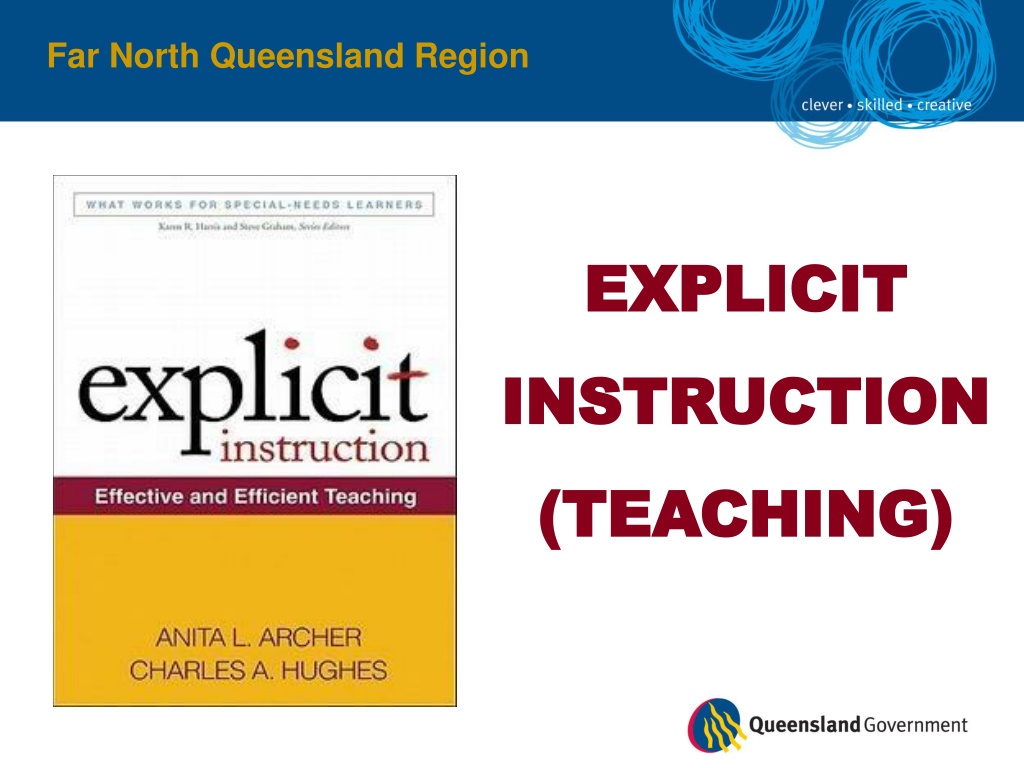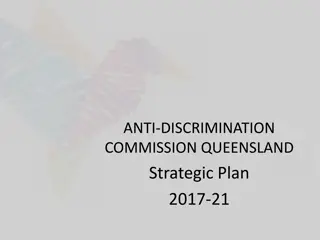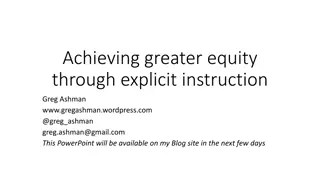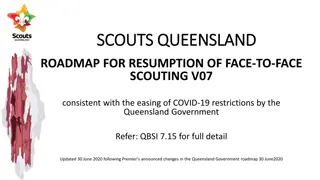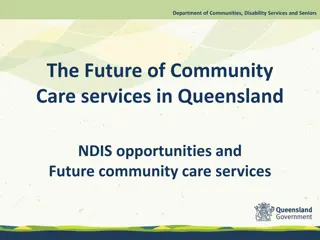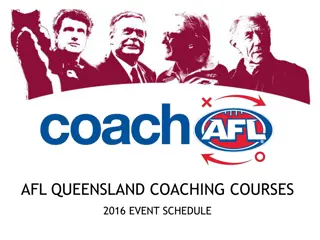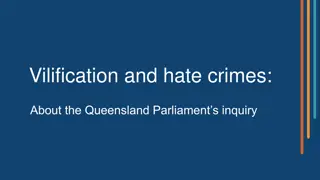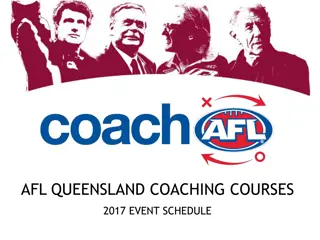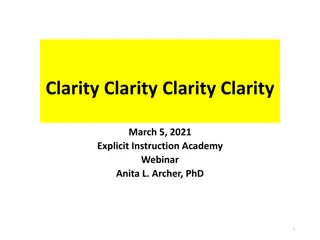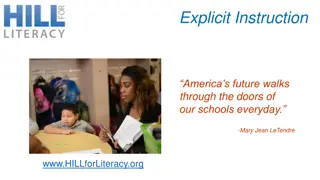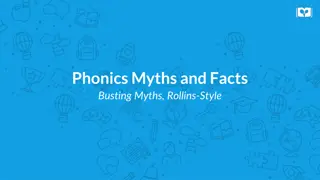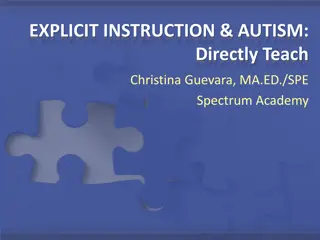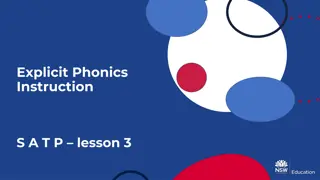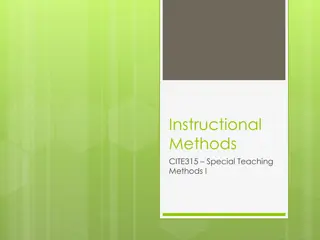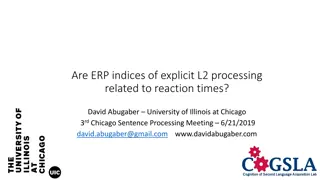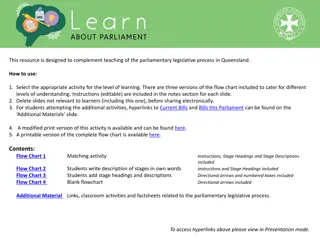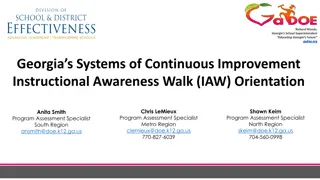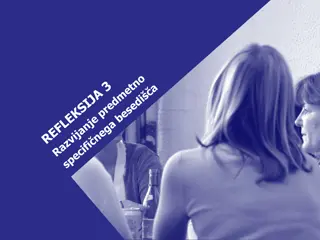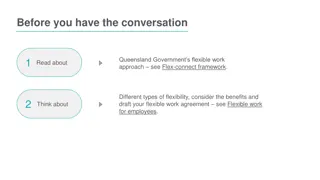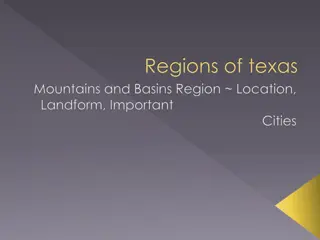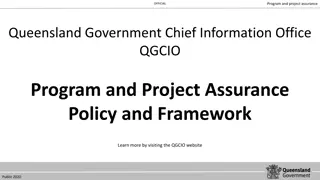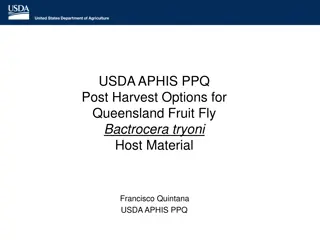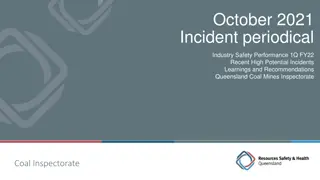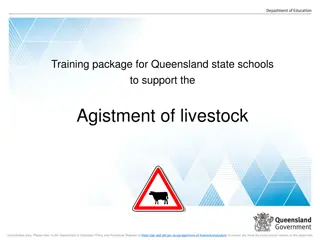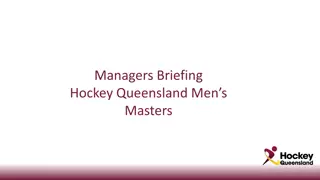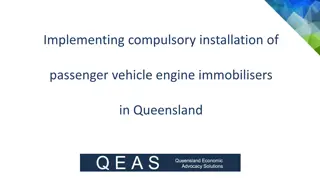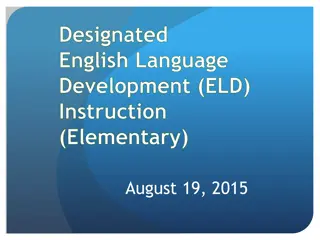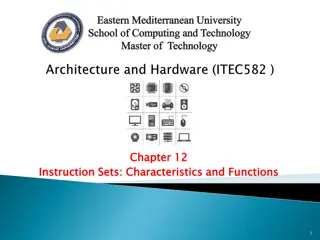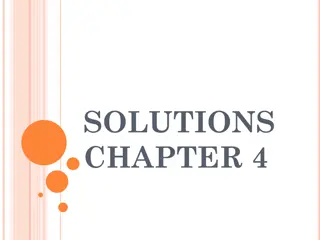Effective Explicit Instruction in Teaching: Far North Queensland Region
Validation of explicit instruction's effectiveness in research for general and special education, emphasizing its importance for all students. Characteristics and elements of explicit instruction are outlined, focusing on clear statements, demonstrations, feedback, and mastery. Key teaching functions include review, presentation, guided practice, monitoring, feedback, and organization of knowledge.
- Explicit Instruction
- Teaching Strategies
- Far North Queensland
- Education Techniques
- Learning Challenges
Download Presentation

Please find below an Image/Link to download the presentation.
The content on the website is provided AS IS for your information and personal use only. It may not be sold, licensed, or shared on other websites without obtaining consent from the author. Download presentation by click this link. If you encounter any issues during the download, it is possible that the publisher has removed the file from their server.
E N D
Presentation Transcript
Far North Queensland Region EXPLICIT EXPLICIT INSTRUCTION INSTRUCTION (TEACHING) (TEACHING)
Far North Queensland Region EXPLICIT INSTRUCTION (TEACHING) Definition Elements of Explicit Instruction Functions of Explicit Instruction Principles of Explicit Instruction Drill and Skill Vs Drill and Kill Structure of an Explicit Lesson Independent Practice Feedback Praise Explicit Vocabulary Instruction Routine
Far North Queensland Region EXPLICIT INSTRUCTION DEFINITION The effectiveness of explicit instruction has been validated again and again in research involving both general education and special education students. While it has been proven to be very helpful for normally progressing students, it is essential for students with learning challenges. Explicit instruction is absolutely necessary in teaching content that students could not otherwise discover. - Archer & Hughes
Far North Queensland Region EXPLICIT INSTRUCTION REMOVING THE MYSTERY Explicit instruction is characterised by a series of clear statements about the purpose and rationale for learning the new skill, clear explanations, and demonstrations of instructional target and supported practice with feedback until independent mastery has been achieved. - Archer & Hughes
Far North Queensland Region ELEMENTS OF EXPLICIT INSTRUCTION (1- 8) 1. Focus instruction on critical content. 2. Sequence skills logically. 3. Break down complex skills. 4. Design organised and focused lessons. 5. Begin lessons with a clear statement of the lesson s goals and your expectations. 6. Review prior skills and knowledge before beginning instruction. 7. Provide step-by-step demonstrations. 8. Use clear concise language. Ref Page 2
Far North Queensland Region ELEMENTS OF EXPLICIT INSTRUCTION (9-16) 9. Provide an adequate range of examples and non-examples. 10.Provide guided and supported practice. 11.Require frequent responses. 12.Monitor student performance closely. 13.Provide immediate affirmation and corrective feedback. 14.Deliver the lessons at a brisk pace. 15.Help students organise knowledge. 16.Provide distributed and cumulative practice. Ref Page 2
Far North Queensland Region EXPLICIT INSTRUCTION SIX TEACHING FUNCTIONS 1. Review a. Review homework and relevant previous learning. b. Review prerequisite skills and knowledge. 2. Presentation a. State lesson goals. b. Present new material in small steps c. Model procedures. d. Provide examples and non-examples. e. Use clear language. f. Avoid digressions. 3. Guided practice a. Require high frequency of responses b. Ensure high rates of success. c. Provide timely feedback, clues and prompts. d. Have students continue practice until they are fluent. 4. Corrections and feedback a. Reteach when necessary. Ref Page 4 5. Independent practice a. Monitor initial practice attempts. b. Have students continue practice until skills are automatic. 6. Weekly and monthly reviews
Far North Queensland Region EXPLICIT INSTRUCTION PRINCIPLES OF EFFECTIVE INSTRUCTION Optimise engaged time/time on task. The more time students are actively participating in instructional activities, the more they learn. 1. Promote high levels of success. The more successful (ie. correct/accurate) students are when they engage in an academic task, the more they achieve. 2. Increase content coverage. The more academic content covered effectively and efficiently, the greater potential for student learning. 3. Have students spend more time in instructional groups. The more time students participate in teacher-led, skill-level groups versus one-to-one teaching or seatwork activities, the more instruction they receive, and the more they learn. 4. Scaffold instruction. Providing support, structure and guidance during instruction promotes academic success, and systematic fading of this support encourages students to become more independent learners. 5. Address different forms of knowledge. The ability to strategically use academic skills and knowledge often requires students to know different sorts of information at differing levels: the declarative level (what something is, factual information), the procedural level (how something is done or performed) and the conditional level (when and where to use the skill). 6. Ref Page 5
Far North Queensland Region 1. ENGAGED TIME / TIME ON TASK 1. Increase allocated time and time spent teaching in critical content areas. 2. Ensure an appropriate match between what is being taught and the instructional needs of students. Consider the importance of the skill and the level of difficulty. Verify that students have the prerequisite knowledge to learn the skill. 3. Start lessons on time and stick to the schedule. Teach in groups as much as possible. Teaching students in large and small groups increases both ALT and the amount of instruction for each student, as compared to other instructional arrangements such as one-to-one instruction or seatwork. 4. 5. Be prepared. Often instructional time is lost because teachers don t have their teaching materials organised and ready for instruction. Thus they must spend time gathering their thoughts and materials that they could be using for teaching. Avoid digressions. When teaching, stay on topic and avoid spending time on unrelated content. Appropriate humour or providing anecdotes or analogies to illustrate and illuminate content should serve an instructional purpose. 6. Decrease transition time. Transition timerefers to moving from one instructional activity to another. Often instructions time is lost through inefficient and disorganised transitions. 7. Use routines. Routines refer to the usual unvarying way activities are carried out in the classroom. Routines save time because both students and teachers know how and what they are supposed to do without having to think or ask about it. 8. Ref Page 7
Far North Queensland Region 2. HIGH LEVELS OF SUCCESS Students learn the most when they are engaged and successful. Learning is more efficient for students by minimising and correcting errors as soon as they occur. Optimal rates of correct responding should be 80% during instruction and 90-95% when students are engaged in independent practice. Factors that increase levels of success: teaching material that is not too difficult clear presentations dynamic modelling of skills and strategies supported practice and active participation careful monitoring immediate corrective feedback.
Far North Queensland Region 3. CONTENT COVERAGE / OPPORTUNITY TO LEARN The more you teach, the more they learn . Be selective on what is important for students to learn. Content coverage can be maximised when teachers focus on skills, concepts, or rules that will generalise to many other items or situations. Avoid digressions, decrease transition times, increase opportunities for student response.
Far North Queensland Region 4. GROUPING FOR INSTRUCTION Teacher-led group instruction has the most positive impact on achievement because of clear explanations, modelling, practice, feedback and frequent responding. Small-group instruction is often more effective in targeting student needs. Instructional groups of 6-8 are generally more effective than smaller or larger groups or one-to-one instruction. Grouping by academic skill levels allows students to learn the skills most appropriate to them, thus increasing success.
Far North Queensland Region 5. SCAFFOLDING INSTRUCTION Through deliberate, careful and temporary scaffolding, students learn new basic skills as well as more complex skills, maintain a high level of success as they do so, and systematically move towards independent use of the skill. Elements of scaffolding instruction: 1. Taking a complex skill (eg. a multistep strategy) and teaching it in manageable and logical pieces or chunks. 2. Sequencing skills so that they build on each other. 3. Selecting examples and problems that progress in complexity. 4. Providing demonstrations and completed models of problems. 5. Providing hints and prompts as students begin to practise a new skill. 6. Providing aids such as cur cards and checklists to help students remember the steps and processes used to complete tasks and solve problems. Ref Page 11
Far North Queensland Region 6. ADDRESSING DIFFERENT FORMS OF KNOWLEDGE Provide instruction that targets different levels or forms of knowledge. Declarative Knowledge factual (what) eg. number facts Procedural Knowledge how eg. two digit multiplication Conditional Knowledge when and when not to apply eg. problem solving
Far North Queensland Region DRILL AND THRILL Vs DRILL AND KILL Routine practice is an extremely powerful tool that helps students learn and retain basic skills and facts in a fluent fashion. Teaching for automaticity Rote learning repetition (chanting, jingles etc) Flashcards Interactive Whiteboards Games Choral Responses teacher, stimulus, worksheet. Development of basic knowledge and skills to the necessary levels of automatic and errorless performance requires a great deal of drill and practice Drill and practice activities should not be slighted as low level . Carried out properly, they appear to be just as essential to complex and creative intellectual performance as they are to the performance of a virtuoso violinist. - Brophy, 1986
Far North Queensland Region STRUCTURE OF AN EXPLICIT LESSON Opening of the Explicit Lesson Gain students attention "Opening it up" Preview Throughout lesson: Review Involve students Body of the Explicit Lesson Monitor performance Modelling (I do it.) Provide feedback "Teaching it" Prompted or guided practice (We do it.) Unprompted practice (You do it.) Ref Page 40 Body of the Explicit Lesson Review Assign independent work"Closing it up" Preview
Far North Queensland Region STRUCTURE OF AN EXPLICIT LESSON Opening of the Explicit Lesson Gain students attention "Opening it up"Throughout lesson: Preview: Involve students State the goal of the lesson. Monitor performance Discuss the relevance of the target skill (or the larger goal). 3 W s: Why? When? Where? Provide feedback Review: Review critical prerequisite skills. Ref Page 40 (Demonstrate understanding)
Far North Queensland Region STRUCTURE OF AN EXPLICIT LESSON Body of the Explicit Lesson Throughout lesson: Modelling (I do it.): "Teaching it" Show and tell (Demonstrate and describe). 3 C s = Clear, Consistent, Concise. Involve students Monitor performance Involve students. Provide feedback (Demonstrate understanding) Body of the Explicit Lesson Prompted or guided practice (We do it.) Physical prompts Fade physical prompts Levels of Scaffolding Ref Page 40 Tell them what to do. Ask them what to do. Remind them what to do. Verbal Prompts Fade verbal prompts Visual prompts Fade visual prompts (Demonstrate understanding) (High rates of accuracy) Body of the Explicit Lesson Unprompted practice (You do it.) (Demonstrate understanding) (High rates of accuracy)
Far North Queensland Region STRUCTURE OF AN EXPLICIT LESSON Closing of the Explicit Lesson Throughout lesson: Review critical content. "Closing it up" Involve students Monitor performance Preview the content of the next lesson. Provide feedback Assign independent work. Ref Page 40
Far North Queensland Region INDEPENDENT PRACTICE Once proficiency has been reached, additional practice over time is needed to maintain that proficiency. THE IMPORTANCE OF FLUENCY IN READING If students can read words fluently within a text passage, they can focus more of their attention and working memory on comprehending what they read. Fluent reading at the word level has been shown to result in increased reading comprehension for many students, including those with learning disabilities. IMPLICATIONS FOR READING Strong empirical relationship between students passage-reading fluency (correct oral words per minute) and reading comprehension. - Fuchs, Fuchs, Hosp & Jenkins, 2001
Far North Queensland Region INDEPENDENT PRACTICE OTHER IMPLICATIONS If a student does not have fluent basic computation skills, complex operations will be interrupted Woodward, 2006 When handwriting and spelling are not automatic processes, these deficits can conflict with generating and structuring content Torrance & Galbraith, 2006 Even the most gifted among us reach their pinnacles through practice and lots of it Ericsson & Charness, 1994 Expertise does not simply depend on innate capacity or ability but to a large degree on frequency (every day) deliberate (to achieve a specific goal) practice over a long period of time along with supervision (feedback on performance). How do you get to Carnegie Hall? Practice, Practice, Practice
Far North Queensland Region FEEDBACK One of the most powerful instructional acts is to provide feedback to students on their performance. When providing corrective feedback provide: Corrections teachers must notice every error Immediate corrections Specific, informative corrections A focus on the correct answer versus the incorrect answer Corrections using the appropriate tone. Correction should be positive not punitive, constructive not destructive, respectful not insulting, encouraging not demoralising. Opportunities to end every correction with the students giving a correct response.
Far North Queensland Region PRAISE When students consistently respond correctly, meet behavioural expectations, or demonstrate exemplary academic or behavioural performances, more elaborate praise can se offered. Characteristics of Effective Praise Contingent on behaviour that meets requirement Specific rather than global Highlights success or effort on difficult tasks Focuses on effort and achievement Compares students past performance Is positive, credible and genuine Flows with the lesson.
Far North Queensland Region LESSON PACE Students engage when lessons are delivered at a lively pace, in which the lesson moves smoothly and quickly from input, to response, to feedback, and back again to input. Practices to Improve Lesson Pace Be prepared Provide just enough thinking time 3 to 5 seconds Provide just enough time for oral, written and action responses After providing feedback on a response move on Avoid digressions Utilise instructional routines.
Far North Queensland Region EXPLICIT VOCABULARY INSTRUCTION ROUTINE Step 1: Introduce the word. Step 2: Introduce the meaning of the word. Step 3: Illustrate with examples. Step 4: Check student s understanding. Ref Page 75
Far North Queensland Region SEMANTIC MAPPING Characteristics of Group Religion Ethnicity Race Acts of Genocide Places Germany Rwanda Bosnia Armenia Killing Massacre Starvation Torture Process of Genocide Hatred Propaganda Denial Dehumanisation Response to Genocide GENOCIDE United Nations Nuremberg trials International laws Results of Genocide People Associated with Genocide People Killed Jews Tutsis Cambodians Death Extermination Annihilation Elimination Hitler Third Reich Pol Pot Khmer Rouge regime Ref Page 84
Far North Queensland Region WORD WEBS Presented to fourth graders predict pretest preface pre- (before) prepare prevent preview preplan Generated by sixth graders Ref Page 87 workable comfortable acceptable affordable likable -able (able) curable enjoyable dependable solvable spoilable lovable eatable
Far North Queensland Region USEFUL REFERENCES AND CHECKLISTS Exploring the foundations of explicit instruction page 247 Designing lessons page 248 Organising for instruction page 249 Delivering instruction page 250 Providing appropriate independent practice page 251
LEADING TEACHING AND LEARNING in FNQ Schools: Charter of Expectations for Schools The school has a culture of care and of high expectations, inside and outside the classroom. All students matter, every day. All students can achieve high academic results. Practices within the school enhance the learning climate and tone. Feedback for learning is valued and practised at all levels. There are high standards of student behaviour (positive school-wide behaviour, orderly student movement, high student engagement and motivation within the classroom). There is an emphasis on the uniform and dress code. There is an emphasis on achieving consistently high student attendance. Curriculum delivery is underpinned by highly effective explicit teaching. There is a high level of community engagementand support. There are strong relationships between parents and their children s teachers. School leaders actively coach and support teachers in their skill development. Staff share collective accountability for all student outcomes.
Charter of Expectations for Teaching School-wide Pedagogy Each teacher: builds effective relationships with all students accepts accountability for each student s learning uses data to inform their teaching and student learning plans and teaches each lesson using the accepted explicit teaching model uses strategies to move student knowledge from short term to long term memory. Learning Environment Each teacher: sets a positive classroom learning tone. establishes an atmosphere of high expectations focuses on high standards of student presentation and handwriting regularly corrects student work and provides feedback to each student has a high standard of classroom display that is relevant and educationally stimulating Student Engagement Each teacher: ensures that each student feels valued and respected by them ensures that each student is given work and other learning experiences at their ability level supports each student to have friends at school engages each student in their progress towards their annual learning goals.
